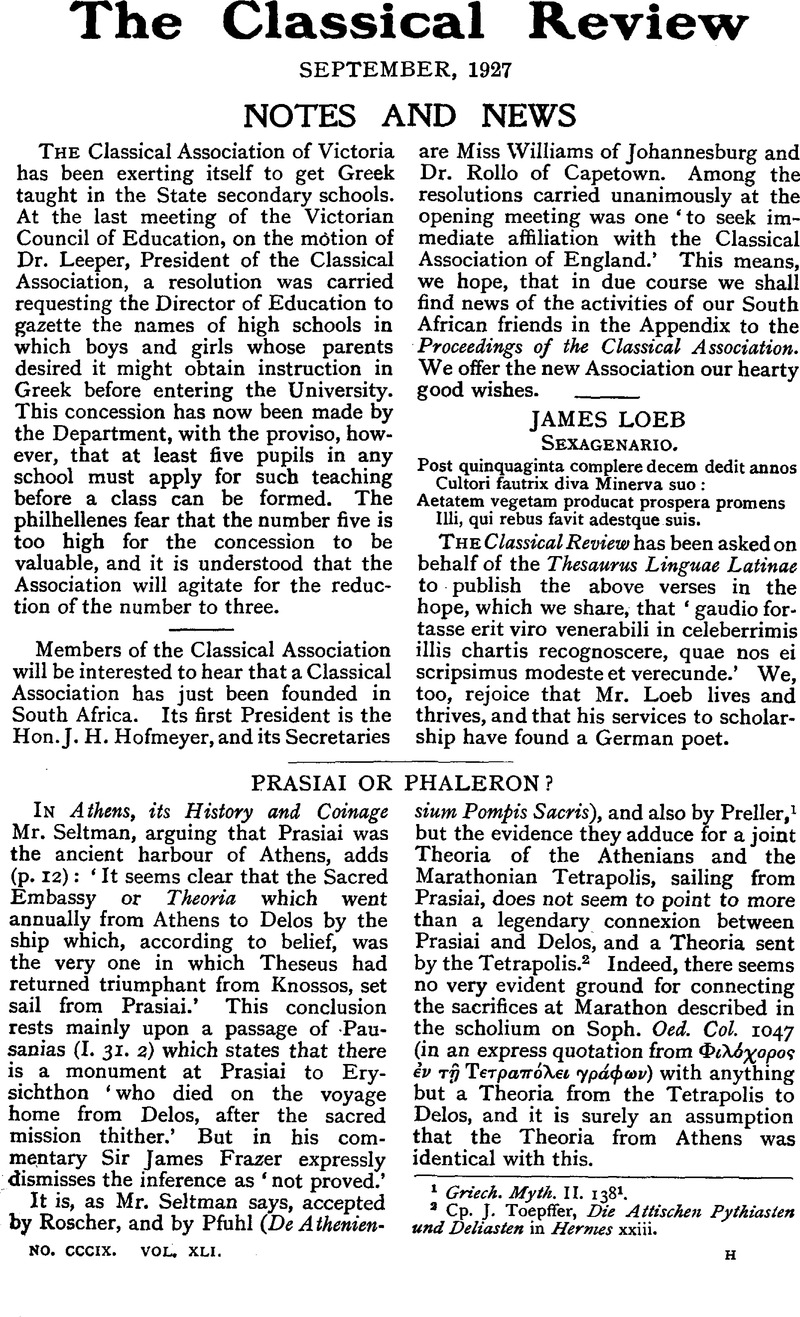Article contents
Prasiai or Phaleron?
Published online by Cambridge University Press: 27 October 2009
Abstract

- Type
- Review Article
- Information
- Copyright
- Copyright © The Classical Association 1927
References
page 113 note 1 Griech. Myth. II. 1381.
page 113 note 2 Cp. Toepffer, J., Die Attischen Pythiasten und Deliasten in Hermes xxiiiGoogle Scholar.
page 114 note 1 Plutarch, Theseus, c. 17. Roscher, Lex. V. 693 s.v. Theseus. In this article Phaleron is taken as Theseus' landing-place, though I. 1388 s.v. Erysichthon gives the Prasiai view.
page 114 note 2 Plutarch, Theseus, c. 23, and Plato, Phaedo 58a-b.
page 114 note 3 C.I.A. I. 210.
page 114 note 4 The passage is thus taken by ProfessorBurnet, , Euthyphro, Apology, Crito, p. 174Google Scholar: ‘It will probably make the Piraeus by the next day.’ (?Phaleron.) A land journey from Sunium would save little time if the port were Prasiai.
- 1
- Cited by


